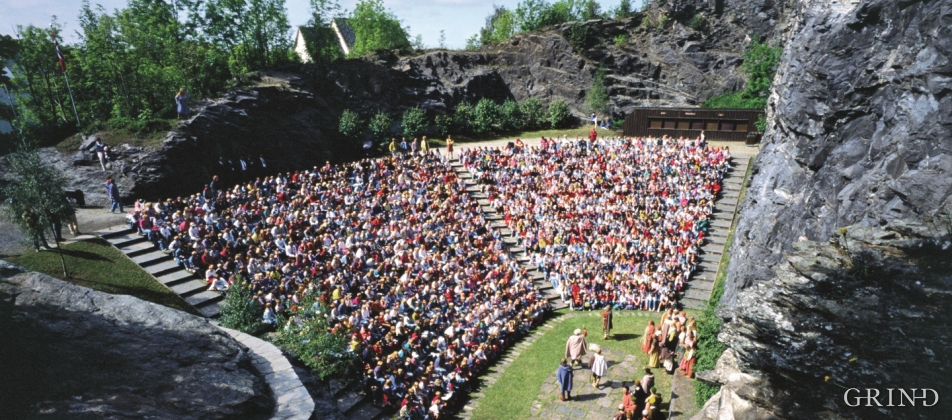Published: 22.07.2015 | Author: Nils Georg Brekke
The old limestone quarry is today rebuilt and become Moster Amfi. (Helge Sunde)
As far back as the Middle Ages lime was burnt in Sunnhordland. In 1702 lieutenant colonel De Lillenschiold from Bergen started quarrying marble in Mosterhamn. He sent marble to Copenhagen and further on to England, Holland and Germany. It was probably the man from Kvinesdal, Ole Hansen Sjækkelandsmoen (Ole, the baker), who took up the burning of lime at Moster in modern times. He came there as a 19 year old in 1844. Some years later he built the first limekiln. Later on other people also started lime quarrying. In Mosterhamn, a limekiln built around 1890 by country merchant Mons Gabrielsen from Valestrand, may still be seen.
Up until the First World War the lime stone industry was an important industry in Moster and several kilns were built. The limestone was burnt to mortar, which for the most part was sent to Bergen, and it was burnt into fertilising lime, which was mostly used in Hardanger and Sunnhordland. Burnt out limestone was sent to other brick works and kilns in the west of Norway.
The work in the quarries meant a lot as additional work for the smallholders at Moster. Some Moster inhabitants also started shipping businesses with the transport of limestone and lime flour.
In the years between the wars the lime industry in Moster became more wide-ranging. A/S Bjølvefossen in Ålvik took over the operations in Mosterhamn in 1917.
In the old lime stone quarry a distinctive amphitheatre has been constructed, a stage for theatre and concerts where the Mostra play about the christening kings is performed every year. The Mostra play portrays a unique historic environment, a memorable experience.



